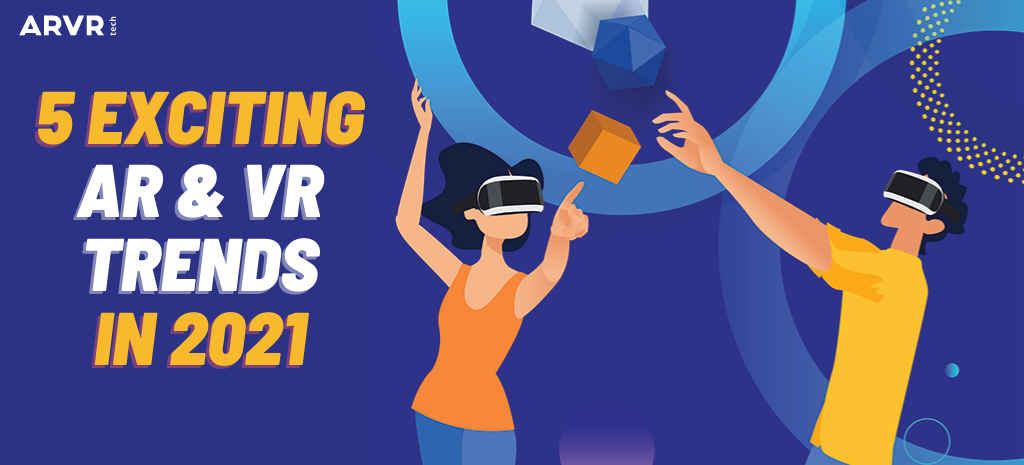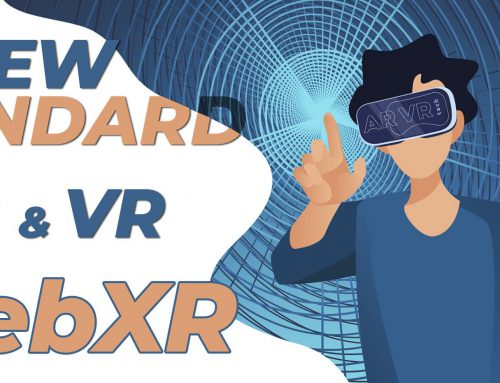
The year 2020 was unprecedented in many ways. With the spread of a pandemic, most of the global workforce was forced to start working from home. Travel has been severely restricted, and large events were canceled altogether. Due to all these COVID19 restrictions and the need for remote work and learning, augmented and virtual reality experienced a market boom. There’s no better moment than now to learn about the AR and VR trends in 2021 that will disrupt the tech industry.
According to Statista, the value of the virtual and augmented reality market in 2020 was around $12 billion. By the year 2024, this number is expected to reach $72.8 billion. That is an astounding growth rate in just four years!
With pretty much every industry out there realizing the potential and necessity of quality AR and VR technology, here are the exciting innovations we’re expecting to see in 2021.
AR Indoor Navigation
Outdoor navigation is an electronic device standard. There is no smartphone, tablet, or even smartwatch out there that can’t provide navigation services through built-in GPS.
However, indoor navigation is decidedly more complicated. GPS is useless in enclosed areas; visual positioning systems work only for large indoor spaces; WiFi positioning systems are often pricey and challenging to maintain.
Augmented reality is the perfect solution for indoor navigation. It offers more accurate user positioning data with a whole host of benefits for organizations:
- Reduced workloads
Increased efficiency
Increased productivity
Better user experience
Increased customer satisfaction
Take a look at how Volkswagen utilized AR indoor navigation to improve localization in their manufacturing processes. This caused a dramatic decrease in costs and downtimes, as well as better optimization of inventory management, inspections, and more. We can expect large investments to be made in AR indoor navigation technology in 2021.
AR Remote Assistance
A rising trend in the augmented reality market is remote assistance.
Imagine a quite regular situation: you’re having trouble with your WiFi. Your router is malfunctioning, and you dial the call center of your provider for help on how to solve the issue.
Typically, an assistant would come on the line and try and guide you through a solution over the phone. If it doesn’t work, they would have to dispatch a technician to take a look, and you might have to wait for a couple of days until you get your WiFi back.
AR remote assistance eliminates all of this. No more blind phone call guidance, no more waiting for an expert to save the day. AR technology will allow you to share what you see directly with a technician without having to wait for them to come over. The technician will be able to annotate your screen, point out what you need to do and where, and easily fix your issues in record time!
Remote assistance in AR is the future of a post-COVID19 world.
AR, VR, and Machine Learning
Machine learning, or artificial intelligence, is experiencing a meteoric rise of its own. This is partially due to the ongoing health crisis – AI is helping in the process of early detection and infection diagnosis, development of vaccines, and assisting overworked healthcare workers.
AR and VR software developers are dedicating more time to AI and creating artificially intelligent solutions for a wide variety of industries, especially the healthcare, automotive, and entertainment sectors.
For example, a combination of AR and AI could provide an additional layer of safety to drivers by pointing out potential hazards on the road. At the same time, these technologies could also alert the driver to historical landmarks or sightseeing spots they might be interested to check out.
The power of AI’s incredible data processing capabilities and AR and VR visual representation will have a significant impact on automation, image and facial recognition, and highly interactive workspaces.
VR Training and Education
One of the virtual reality trends that will continue growing in 2021 is the result of the immersive nature of the technology. Education through VR might be a bit behind, but VR training is steadily gaining popularity. Across the world, businesses are investing in virtual reality hardware and software to safely, inexpensively, and effectively coach their employees in new procedures and processes.
Virtual reality in retail industry is a prime example of this. By immersing themselves in VR, employees can learn how to manage long queues or crowds of shoppers without disrupting the actual daily workflow.
Top virtual reality industry trends include this versatile technology taking its rightful place in training programs, everywhere from manufacturing and manual labor to healthcare procedures to dealing with customers in retail or food service industries.
A major benefit of VR is that it can be used for improving both soft and hard skills, which can become invaluable to organizations of all types.
VR 360 Marketing
A niche use of virtual reality is integrating 360-degree scenes into marketing campaigns. These relatively simple scenes allow consumers to get a realistic impression of a hotel room, a travel destination, a real estate property, a new car they’re hoping to buy, or similar.
It is experiential marketing at its finest. Organizations aren’t offering just static pictures and a list of features – they’re offering an entire experience. A consumer that enters the 360 space and gets a feel for the environment first-hand is not likely to forget it any time soon. They’re even more inclined to make a purchase after a positive experiential marketing event.
With the development of 360 videos, 360-degree marketing is taking on a whole new dimension in 2021. Platforms for developing virtual tours are popping up left and right, and you might want to look into setting up one for your business before your competitors beat you to it.
Conclusion
Augmented and virtual reality future trends aren’t limited just to the sports, gaming, and entertainment industries. With the rapid development of technologies such as AI and ML, more use cases are unlocked for AR and VR across the board.
We’re facing breakthroughs in augmented reality medical applications, mixed reality applications, virtual reality marketing, training and education applications, and more. AR indoor navigation will set a new standard for manufacturing companies, while AR remote assistance will have a massive impact on how different procedures are handled in most industries.
There are still some drawbacks that we have to mention – even though VR trends are on the rise in the business sector, we still can’t expect this technology to replace convenient smartphones, tablets, and other household devices. VR headsets are still too cumbersome and too limited with their use for virtual reality to become ubiquitous.
That being said, the future looks promising. 2021 will be a productive year for AR and VR, and hopefully, it will treat us all a little bit kinder than the previous one.
If you want to learn more about how to incorporate these innovative technologies into your business, feel free to send us a message. We look forward to collaborating with you!


